Cardassian Union
More actions
The Cardassian Union, sometimes referred to as the Cardassian Empire, has a long, rich history. The Cardassians were originally an empire driven by peaceful and spiritual knowledge, but over time, turned to authoritarianism and militaristic expansionism. Since the devastation of the Dominion War, the Union has been in a period of rebuilding its infrastructure and rediscovering its identity. The dawn of the 25th century finds the Cardassian people deeply polarised between the liberal youth and civilian government seeking reform, and the regressive military and older citizens anxious to recover former glory.
Since mid-2401, relations between the Cardassian Union and the United Federation of Planets have been defined by the tensions in the Federation-owned border territories of the Former Demilitarized Zone, inhabited by both Federation and Cardassian citizens since the Dominion War. Now, a reborn Maquis and the Cardassian insurgents The True Way strike at each other and both governments, vying for control and trying to expel those they oppose. Starfleet resources are stretched too thin across the galaxy to easily restore stability. The Union, meanwhile, is keen to protect its citizens living in Federation territory and bring renegades to heel, and often involves itself with or without Starfleet’s permission. One wrong step from any Starfleet captain and relations between these two old rivals could burst into greater hostilities.
The involvement of the Cardassian Union in the Underspace crisis of 2401 and the Nightfall Incursion of 2402 has shifted relations between them and the Federation. The Union's unilateral role in sealing Underspace was first a source of tension, but later collaboration with Starfleet to seal away the Vaadwaur threat may lead to future scientific cooperation.
History
The history of the Cardassian Union tends to consist of extremes. Once a peaceful and spiritual people, their planet’s poor resources proved unable to support their expanding population, and starvation and disease became rampant. Millions of deaths resulted, leading to a general breakdown in the government. The military forces of the planet staged a takeover and launched several wars against their neighbors in order to secure new resources. The Cardassian Union itself was formed under an agreement between Central Command and the Obsidian Order to share power.
In 2346 the Cardassians invaded Setlik III, believing it to be a base to be used in an invasion of their own territory by the United Federation of Planets. This led to a period of formal and informal hostilities over the following twenty years, ending in a controversial treaty in 2367.
Dominion War
In 2372 a civilian uprising deposed the military government. Suspecting Dominion involvement in the coup, the Klingons launched an invasion of Cardassian space and eventually Cardassia Prime, the Cardassian homeworld. The Federation opposed this action and was successful in forcing the Klingons to halt their advance towards Cardassia Prime. This destroyed the Federation-Klingon alliance and resulted in a short period of hostilities between those two powers after the Klingon Empire withdrew from the Khitomer Accords. Despite this, the Federation shipped considerable aid to the devastated Cardassian government.
Humiliated by having to rely on charity from a former enemy after a relatively quick and easy defeat at the hands of the Klingon Empire, Gul Dukat led a Dominion takeover of the Cardassian Union and was installed as ruler of the region in 2373. The Dominion were quick to upgrade the Cardassian fleet and introduce more advanced technologies into their shipbuilding techniques. Cardassian forces subsequently fought alongside the Jem'Hadar in the Dominion War with their leader, Legate Damar, who took power after Legate Dukat was presumed dead.
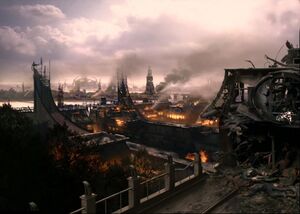
But the war took an extensive toll on the Cardassian people, who lost prestige with the Dominion following their alliance with the Breen and suffered losses of over 7 million troops by the war’s mid-point. This triggered Damar to instigate and lead a rebellion, which ultimately allowed the Federation Alliance to prevail in the war’s final battle at Cardassia Prime. However, the Dominion surrender came after they had ordered the genocide of the Cardassian people, 800 million of whom were slaughtered before the cessation of hostilities.
The United Federation of Planets extended a hand of friendship to the Union after the war in an effort to help them rebuild. While the Union was loath to accept that help there was little choice: the Cardassian Union had been devastated by the war and barely had the resources to rebuild Cardassia Prime, much less the rest of the Union. Three months after the end of the war, the first Federation assistance arrived on Cardassia Prime.
Recovery
Post-Dominion War Cardassia, and the Union as a whole, is a ghost of its former glory. With their infrastructure obliterated by the occupation by Dominion forces, vast swathes of their population murdered, and survivors left starving and without the means to support themselves, the restored, democratic Detapa Council turned to the Federation for aid.
It did not come without conditions, such as an end to Cardassian territorial expansionism and limits upon military investment and size. The borders whose demarcation led to the Maquis less than ten years prior were drawn anew, the Federation reclaiming territory that they had once ceded. With some Cardassian settlements established on those worlds, some freedom of movement and rights to settle were permitted, but in further shame to the Cardassian people, security for that border fell to Starfleet.
The Cardassian people were eager to see justice for their genocide, and the response of the Detapa Council was to seek out citizens who had been complicit in their collaboration with the Dominion. What followed was a period where not only those who had facilitated war crimes were charged appropriately, but those who had enabled Dominion rule were identified and barred from holding military rank or public office. This necessitated independent investigations and independent funding, and to undertake this process, the Detapa Council restored one of the crown jewels of Cardassian law and order: the Obsidian Order. Funded by both the Cardassian government and, indirectly, Federation aid, the reborn organisation began its legal purge of those who had helped the Dominion’s staggering crimes against the Alpha Quadrant.
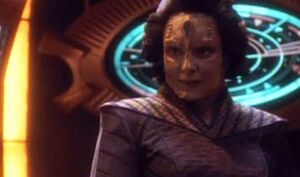
This was a complicated and controversial process. Many accused military officers claimed to have formed part of the resistance, though their critics pointed out they had swapped sides only after the destruction of Lakarian City by the Dominion, and had otherwise stood against the hero Damar. Others claimed they were being scapegoated for following what were, for a long time, the legal orders of the Cardassian government to aid their Dominion allies. The sheer size of the undertaking and the crippled Cardassian infrastructure meant many suspects, especially military officers, fled to postings at far-flung borders where bureaucracy was slow to catch them up. The involvement of the Federation in this process did not make it more popular among the Cardassians, and the population became polarised between those who wanted all Dominion collaborators tried or removed from public life, and those whose lingering sense of victimisation by the slaughter of their people - or simply a desire to move forward rather than be caught up in the past - saw them oppose the process.
Federation Withdrawal
In 2385, the Attack on Mars prompted the Federation’s abandonment of nearly all interstellar operations, especially aid, and they withdrew all assistance from the Cardassian Union. Now, the Detapa Council had more concerns than justice for past crimes, and was forced to scramble for essential resources to not merely rebuild, but simply feed its people. Economic recovery stalled, the Council was forced into several unpopular measures, and its popularity - and the popularity of this democratisation process - waned.
The ensuing discontent and desperation was exploited by Central Command, the military leadership, sidelined by the Detapa Council and underfunded by Federation decree. Many of the remaining senior officers had been forced into the hinterlands to avoid the purge of those complicit in Dominion rule, a process which was abandoned with the Federation’s withdrawal. Nursing an even greater sense of victimisation, they argued that the democratic experiment had failed, and merely proven the Detapa Council’s reliance on the Federation. The mistake, they insisted, was not old Cardassian policy - it was merely their corruption by the Dominion.
The response of the Detapa Council was to turn the reborn Obsidian Order on Central Command, which infiltrated its ranks and could staunch the military’s ascent. The years which followed were marked by these shadow wars, with the Detapa Council retaining formal authority over the Cardassian Union and using the Obsidian Order to keep Central Command in check. The military, in turn, has only grown in popularity outside of Cardassian core worlds, seen as the only entity capable of providing for the Cardassian people in wealth and pride.
A Renewed Purpose
By the mid-2390s, the power struggle between the Detapa Council and Central Command had reached something of an impasse. The military remained powerful and popular, especially among older Cardassians who rejected the idea of abandoning past principles of strength and authority, despite the impact of the war. The Detapa Council, meanwhile, had both managed to stymie the military’s restoration through the Obsidian Order, but was also popular among the next generation of Cardassians, who were beginning to reckon with their people’s history and question their role.
Into this space stepped the Obsidian Order to broker a new agreement and bring an end to the factionalising. The Union’s troubles, it pointed out, had been brought about not only by the war, but the aftermath - specifically, the Treaty of Bajor. The war had left the Cardassians devastated by the Dominion, but the great powers of the Alpha Quadrant had placed enormous restrictions on the Union’s economy and military, leaving it with little means of supporting itself. Then, the promised aid had been abandoned, the Romulan supernova forcing the Star Empire to pull out, the Attack on Mars prompting the Federation’s withdrawal, and even the Klingon Empire’s involvement had been dulled by their internal conflicts. The rest of the galaxy had reneged on their agreements - why should Cardassia be held to theirs?
The Detapa Council had been loath to turn against the Treaty of Bajor, anticipating this would merely play into Central Command’s hands, but was mollified by the Obsidian Order’s next offer: the means of controlling the military. The Order had recovered and retained many records of Dominion military technology used alongside the Cardassian Union in the war. Materiel had been removed by the Dominion itself in its withdrawal or in the Treaty of Bajor, but for decades the Order had studied records and begun to develop and construct this military technology itself.
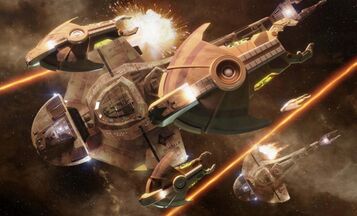
Research facilities and industrial infrastructure were placed in the hands of the civilian government, somewhat forcing Central Command to heel if they wanted these badly-needed upgrades and expansion to their fleets. Some of their most virulent and extreme officers were purged at the Detapa Council’s instructions, the new leadership - still militaristic and eager for glory days of old - more amenable to cooperation. To resource this rebuilding, the Detapa Council in turn let the military off the leash, allowing them to venture beyond the Union’s trailing border. In violation of the Treaty of Bajor, the Union expanded, annexing new worlds with resources that could bolster not only the military, but the economy in general.
The Federation made a token protest, but little more; it remained in its post-Mars downturn and had little rebuttal to the Union’s argument that the Cardassian people’s wings had been clipped by the Treaty of Bajor, only for the rest of the galaxy to renege on its commitment to help them rebuild. This provided a twofold victory for the Cardassian Union; its military had successfully asserted the interests of the Cardassian people, while the Detapa Council had adeptly parried the diplomatic consequences. For the following years, the Union continued its self-sustaining rebuilding. Fleets saw extensive upgrades, improved with Dominion technology provided by the Obsidian Order and built by civilian industrialists, while the ensuing territorial acquisitions funded the Detapa Council’s economic restoration. While the military and government did not see eye-to-eye on the ideology of the Cardassian people’s future, for a time these differences were put aside in order to bring economic stability to the foundering Union.
The True Way and the Maquis
In early 2399, ships of a Cardassian design attacked a Starfleet runabout on patrol at Hakton VII, a former world of the Demilitarized Zone now back in Federation territory. Starfleet’s initial response was to blame the Union, but Central Command denied culpability, and Obsidian Order assets confirmed this. Before any further investigation could be launched, a second attack came, this time against a Cardassian military survey station on the border. This time a group claimed responsibility: the True Way, an old Cardassian anti-Federation extremist organisation that had been founded anew.
It became apparent the True Way had been born from the military officers ejected from Central Command in the mid-90s. With stolen last-generation military equipment and followers equally furious at the Union’s leadership and the Federation alike, they had gone rogue and turned their eye on the Federation-Cardassian border, which still enjoyed extensive freedom of movement to contend with its diverse populace. There they sought to disrupt the Federation’s control of former Cardassian territory handed over in the Treaty of Bajor, especially in parts of the old DMZ where Cardassian citizens were still resident. For two years, the Federation and Detapa Council cooperated in trying to bring the True Way to heel.
This was an uneasy cooperation at the best of times. The Federation had only newly returned its attention to the wider galaxy, and once again began to protest at the Cardassian border expansion and the clear development of their military. The difficult relationship between the Detapa Council and Central Command only grew more strong in the face of this diplomatic onslaught.
In mid-2401, Starfleet’s Outpost C-91 in the DMZ was attacked and destroyed. Eyewitness testimony and damaged sensor records pointed the finger not at the True Way - who had acted as insurgents far more than a direct military threat - but Cardassian Central Command’s newer, more advanced ships upgraded with Dominion technology. Even as the Cardassian Union denied the accusations, the Federation pointed the finger, with Starfleet convinced that Central Command had funded and equipped the True Way. The more hawkish in Starfleet warned that the Union had always bristled at losing the old DMZ in the Treaty of Bajor, and, with tensions rising with the Klingon Empire in the Beta Quadrant, might jump at the opportunity to recover them. Diplomats, however, stepped in to insist on a joint investigation by a shared Cardassian-Starfleet mission.
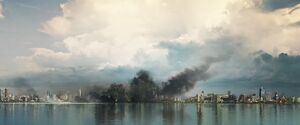
Before this investigation could truly begin, matters escalated anew. A communications hub on a Cardassian-inhabited world in the DMZ was destroyed with planted explosives, killing several workers. This was followed by a proclamation transmitted across the region from a group taking credit for the attack: a network of Federation citizens convinced the Union would try to retake these worlds, riled up by Starfleet’s long-term neglect of the region since Mars and their apparent immediate compromise. The communications hub was, they insisted, a cover for surveillance operations, Cardassian residents of the DMZ instead spying on the area to lay the groundwork for an upcoming offensive. This group had decided to take matters into their own hands if Starfleet would not, and were determined to protect their homes. In honour of those who came before, they called themselves the Maquis.
Any chance of a diplomatic solution has, in the short-term, evaporated. Starfleet maintains the Cardassian Union is funding the True Way, while the Cardassians, in turn, blame Starfleet for the reborn Maquis. The two groups both operate in this borderland with little regard for whose territory is whose, and both view it as rightfully theirs. While they quickly showed they will both clash with each other, their military resources are limited, and they operate at their best with insurgency tactics to undermine either Federation control, or what they see as Cardassian aggression. Although the DMZ is Federation territory, Cardassian citizens were not forcibly relocated with the Treaty of Bajor and have the right of freedom of movement. Many have called for protection from the Cardassian Union, with Starfleet’s post-Mars downturn depressing faith in their capacity or interest to protect them. Treaties signed during the downturn, trying to relieve the burden on the Federation, empower ships of the Central Command to respond to these direct requests for help under certain circumstances - circumstances which become strained with every request.
The old DMZ has become a powderkeg. The two insurgency groups fight each other and their respective powers, while Starfleet has limited resources to respond, having abandoned its regional infrastructure over the decades and with its attention drawn elsewhere. Central Command is eager to get involved to saber-rattle, while the Detapa Council does its best to rein them in, knowing they cannot afford direct hostilities with the Federation. Everyone blames everyone else, with old wounds reopened and insurgents stirring the pot.
Deeper in the Cardassian Union, the fledgling concord between the Detapa Council and Central Command shows cracks. The former, supported by the older, more militaristic of society who remember the glory days, wishes to push to show Cardassian supremacy and recover what was once theirs. The latter, supported by a new generation still learning of their parents deeds during the height of Cardassian authoritarianism and the Dominion War, wants a new way forward. If the border situation does not resolve, there may be little choice.
Underspace
In 2401, apertures into the network of subspace tunnels known as Underspace opened across the whole galaxy. While the Federation treated this as an opportunity for science, commerce, and diplomacy, the Cardassian Union saw this as a threat to galactic stability. In secret, they engaged the Turei Alliance, keepers of knowledge on Underspace, in negotiations on how they might end this threat. The result was the Union's construction of platforms near apertures across the galaxy, built to emit tachyon pulses that would seal the openings and lock the network away, back to its limited presence in the Delta Quadrant. The Federation expressed outrage at this decision, their diplomats insisting this was not the Cardassians' decision to make.
Less than a year later, Underspace tunnels opened anew as the ancient Delta Quadrant empire of the Vaadwaur Supremacy launched its assault on the Alpha and Beta Quadrants. Orchestrators of the Blackout phenomenon that had splintered the galaxy, the Vaadwaur struck many governments, including the Cardassian Union, to try to restore their power. Like much of the Alpha Quadrant, the Union and its military forces were hit hard, with many worlds suffering devastation to their industry and infrastructure, and some bearing witness to mass atrocities as the Vaadwaur waged a campaign of fear.
The Union was integral to the end of the Vaadwaur threat, however. In collaboration with Starfleet, they redesigned their tachyon platforms to be more effective. As the Blackout fell and the Vaadwaur forces were repelled, the Union military and Science Directorate, in cooperation with Starfleet, constructed and activated these platforms at new apertures to implement the 'Wall Protocol'. With the Vaadwaur fleeing back to the Delta Quadrant, the Wall ensured the intra-galactic routes were sealed behind them.
This has left the Union politically at a crossroads. Many conservative factions are deeply paranoid at the sudden threat from the outside, and eager to rebuild their military might, while concurrently proud of the Union's role in, as they see it, saving the galaxy. Progressive factions see opportunity in their now-ongoing collaboration with the Federation. The galaxy is yet to see which faction will prevail, and circumstances in the DMZ have not stabilised.
Culture
It is an understatement to say that Cardassian society is in a state of flux. The Dominion War was an existential shock to their principles, and the thirty years following have provided little clarity of the best way forward. As such, Cardassians are a highly disparate people, some clinging to traditions for comfort and strength where others more aggressively seek political and social reform, as well as everything in between.
Family
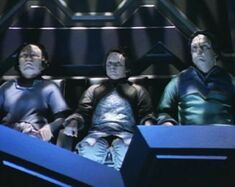
It is a common Cardassian saying that ‘family is all’. The parent is the highest figure in the familial unit, which is considered a cornerstone of Cardassian society. Their homes are often multi-generational, and Cardassians place great value on the continuation of the family line. The ideal Cardassian is expected to be dedicated to both the state and their own family. This is not considered an inherent contradiction; the Cardassian family is a unit of society that works together to keep all of Cardassian society strong and loyal to the state. The potential for conflict has of course fuelled many stories, but it is telling that the most famous of these end with loyalty to the state placed above all, with familial bonds that test this allegiance considered ultimately deviant.
There has traditionally been equality between the genders, though they are encouraged towards different societal roles. Men usually enter military or political service, while scientific research and technological development are commonly the purview of men. Outliers have not been generally prejudiced against, and many such individuals have succeeded in their careers.
The State
The state is traditionally viewed as being all-seeing, all-powerful, and without fault. Loyalty to the state is seen as the most fundamental Cardassian value, and is considered synonymous with loyalty to one’s family and one’s community. Its presence has historically been felt throughout society, directly responsible for housing, education, and social support structures. This permeating presence has been felt nowhere more keenly than in the criminal justice system, as-yet unreformed since the Dominion War. Routinely condemned by the Federation, trials always deliver a guilty verdict and exist to demonstrate the strength of the state and the victory of justice over evil. Initial calls for its reform collapsed during the state’s need for a strong fist in rooting out war criminals and Dominion collaborators, and eventually, internal campaigns against it lost steam. Its defenders maintain that its detractors in the Federation judge the system by their own standards. They argue that guilt and innocence are established by the robust Cardassian criminal investigation system ahead of time, that sifting through the murky details of proving guilt should lie with experts rather than be exposed to the public. Truth, they say, has already been established by the time the accused is brought to trial.
Reform
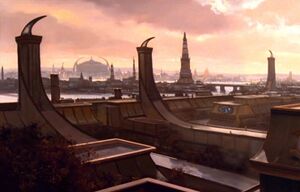
The Treaty of Bajor re-established the Detapa Council, now a parliamentary democracy headed by its Chairman, who is also the head of state. With universal suffrage granted to all Cardassian citizens over the age of majority, this is the most significant political reform to come to the Union in centuries, and largely the result of Federation pressure at the end and during the aftermath of the Dominion War. It has not been without controversy or limitations. The past thirty years have been beset with accusations of electoral corruption, especially since the Federation withdrawal from Cardassia in 2385. There have been difficulties with voter engagement, as many more traditional Cardassians dislike the idea they should dictate the state’s decisions. The democratic nature of the Detapa Council is also a part of Central Command’s agitation, as they believe it weakens the state. However many Cardassians, especially younger Cardassians, have embraced the change and seek further reforms. Either from exposure to other ideas and cultures from Federation aid, or identifying the state as culpable for Cardassian suffering by allying with the Dominion, a significant proportion of society has turned away from the traditional loyalty to the state. Overall, as a people they are still communally and civically-minded. The most common state of mind for the progressive Cardassian is that it is their duty to serve the state by challenging and improving it, rather than the traditional perspective that the state was already infallible. This has brought about a new era, despite the extreme poverty in many quarters of society, of philosophy and literature to develop and perfect this image of what the ideal Cardassian should be. While there are some who go further, championing individual freedoms and seeking even to turn from military influence and the current judicial system, they tend to be fringe figures. Often they live in the former Demilitarized Zone or near that border, and are considered to have been unduly influenced by the Federation.
Factions of the Union
Detapa Council
The Detapa Council, headed by the Chairman, the Cardassian Head of State, is the democratically-elected civilian governing body on Cardassia Prime that is tasked with all the civilian power of the Union. The Detapa Council ostensibly represents the Cardassian people and their wishes.
They command the Obsidian Order, the restored Cardassian intelligence organisation. While the Order has lost much of the institutional memory of old and is not the same power it once was, it has proved effective in watching the Detapa Council’s enemies and helping the civilian government retain control.
While tensions between the Detapa Council and Central Command were rife since the war, the Obsidian Order has managed to broker an agreement between the two. In exchange for the military expansion and investment they wanted, Central Command purged many of its more extreme officers and fell closer under the Detapa Council’s control, leading to an expansion of Cardassian borders to restore the military and civilian economy. The Detapa Council still controls the research facilities developing new and reverse-engineered technology derived from the Dominion, and the industrial infrastructure that allows this technology to be redirected to upgrade and expand the military.
The Detapa Council is committed to restoring peace with the Federation, though they cannot lose face by turning away from requests for aid from Cardassian citizens who live in the former DMZ. They are also steadfast in their rejection of accusations that the Cardassian Union has been secretly funding or supporting the True Way. While they are trying to muzzle Central Command and cooperate with Federation diplomats, they will not compromise on protecting their people or maintaining face.
Central Command
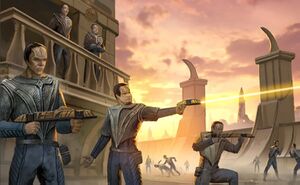
The Central Command is the military leadership of the Cardassian Union. Operating thousands of vessels across Cardassian space the Central Command is tasked with, but not limited to, overseeing the protection of the Cardassian people, the security of its borders, national security of the Cardassian Union, exploration of unknown space, first contact with new races and civilizations, shipping and handling of cargo within the Cardassian Union, and protection of civilian freighters within Cardassian civilian owned companies.
While Central Command spent many years opposing the Detapa Council, they have recently enjoyed a new era of cooperation from the Obsidian Order’s brokered agreement. After decades, even before the war, of operating fleets a technological generation behind their rivals, the incorporation of Dominion technology has advanced Cardassian warships by light-years almost overnight. Central Command remains reliant on the civilian infrastructure for this continued technological development and the construction and refit of their ships, keeping them, for now, cooperative with the Detapa Council.
Central Command has also firmly saber-rattled with the new hostilities arising in the old DMZ. They are committed to not only defending Cardassian interests, but uprooting the new Maquis. This extends to protecting against Maquis forays into Cardassian territory. Loose treaties with the Federation once gave Central Command the right to protect the interests of Cardassian residents in Federation space, knowing the Union did not have the resources to act in any force. Central Command is now delighted to invoke those treaties, using it to cross the border on the most spurious of grounds if they can claim they are answering a request for help from a Cardassian citizen, or responding to a threat presented by the Maquis. The more extreme in their leadership are openly spoiling for a fight with the Federation - with trouble stirring in the Klingon Empire to split Starfleet’s interests, they could, they are convinced, force the Federation to cede territory rather than invest in a drawn-out conflict. They may be right.
The True Way
The military officers ejected from Central Command in the mid-90s did not go quietly. Some of the most extreme, stubborn, and militaristic of the Union, they saw a Cardassian future through strength and warfare, and their ejection only further enflamed their belief that the Union’s leadership was weak and un-Cardassian. They fled to the fringes of Cardassian society, stealing what military resources they could, and began to gather those as desperate and angry.
This first led to pirate activities along the Federation-Cardassian border, primarily - but not exclusively - targeting Federation cargo ships. While this provided some resources, their anger at both governments soon took a more ideological stance, and there was a clear outlet for their agenda: the former Demilitarized Zone, now largely Federation territory with a significant Cardassian populace and Cardassian civilian interests.
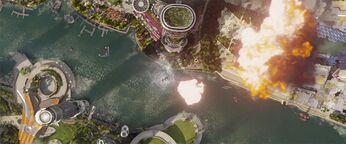
They have operated in the region for several years, striking against Starfleet border protection, raiding Federation civilian assets, and making attacks against Cardassian forces on the new border which in their eyes are complicit in Federation rule of what they believe should be Cardassian territory. It is suspected, but not yet confirmed, that they may be receiving or soliciting support from Cardassian residents of the former DMZ who may be sympathetic to their agenda.
They stand accused of destroying the Outpost C-91, the Starfleet DMZ base whose loss has stoked the recent crisis. The True Way has given no response, which experts deem unusual, as their endeavour to draw attention and support often leads them to taking credit for attacks. It is highly possible they have been too busy preparing for Starfleet’s response, and dealing with the return of the fledgling new Maquis.
Nevertheless, the True Way now enjoy unprecedented support among the Cardassian people. Once seen as rabble-rousers and dissidents, a notable minority of the populace consider them champions of the rights of those Cardassians in the DMZ and of the Union’s pride in general. While the accusations they have been funded by Central Command go unproven, it is possible they have, since C-91’s destruction, enjoyed some sympathetic civilian patronage. Regardless, they continue their insurgency operations, trying to undermine Starfleet control of the old DMZ and particularly clash with the new Maquis.
Cardassian Territory
Core Worlds
The central worlds of the Union, including Cardassia Prime, hold the seat of government, most of the Union’s political and economic infrastructure, and home the majority of the population. They were also the regions that suffered the most at the hands of the Dominion. As such, the Detapa Council has ensured these worlds received the lion’s share of Federation support in the post-war years. Reconstruction has been extensive, leading to mass migration from border worlds. This region is largely stable, and places its faith and support in the democratic government of the Detapa Council.
Border Worlds (Coreward and Trailing)
With the collapse of the Cardassian economy after the Dominion War and the funnelling of resources and opportunities to the core worlds, many Cardassians left their border colonies for these new prospects and support. Those who remained have found themselves largely forgotten by the Detapa Council, low on the government’s development priorities.
They enjoyed some attention in the post-war years as Central Command led expansionist efforts to worlds beyond these borders, finding themselves a new frontier for the Cardassian people. While the riches which came from this were limited, their sense of being pioneers of Cardassian rebirth and pride was powerful. As such, these regions are largely sympathetic to and supportive of Central Command’s vision to Cardassian dignity.
This can particularly be seen on the Coreward border, beyond which lies the Thomar Expanse. Officially a no-man’s land, it is rich in resources and rife for competition between the Union, the Breen, and the Tzenkethi.
The Federation Border and former Demilitarized Zone
See: Former Demilitarized Zone
The border with the Federation fell closer to Cardassia Prime than ever before after the Dominion War, the Federation reclaiming territories surrendered in the treaty signed less than a decade earlier as well as the former Demilitarized Zone. However, the Federation was mindful that many Cardassian people had settled and made lives for themselves in this region, and had learned its lesson from forced resettlement.
As such, the border has been kept open for much of the last 20 years. Cardassian citizens who settled or had family who settled on those worlds were allowed to live as residents within Federation territory. They were further granted freedom to cross the border with the Union for personal and professional reasons. This border was largely regulated and watched by Starfleet, though their presence faded after Mars, with many locals left to fend for themselves. In practice, Cardassians and Federation citizens alike have lived and worked alongside each other in the old Demilitarized Zone, ostensibly under Federation rule but with little government involvement or oversight. In some places, this coexistence has been peaceful. In others, old animosities have been hard for both sides to forget.
The region was, however, stable until the return of the True Way. Their assaults on Starfleet and Cardassian forces and raids on Federation worlds for resources have seen the area more desperate to protect itself. Many peoples living there are suspicious of both governments, who have shown little interest in their ways of life until recently, and are considered largely responsible for past difficulties of the region. And still there are Cardassian residents who may resent living in their old family homes under Federation rule, and find themselves sympathetic to the True Way’s agenda.
The recent upsurge in conflict has only exacerbated matters. Now, the insurgency of the True Way is opposed by that of the new Maquis. Cardassian Central Command is far more eager to involve itself in the region, in adherence to treaties which once resulted in gentle and limited joint policing of shared interests, but now can lead to forays of Cardassian ships into Federation space. Starfleet avoids making great shows of force, but nevertheless, it could only take one wrong step for the entire region to burst into violence.
Cardassians In Play
- The Cardassians lost a lot in the Dominion War and are only now in a position to imagine recovering it. Their agenda is primarily retaining control over their borders, restoring their pride, and maintaining stability. Conflict over the order of these priorities, how to achieve them, and allocating their limited resources are a cause of much of their present condition.
- The Federation is held in low regard by many Cardassians. Not only was the Treaty of Bajor a punitive post-war arrangement, but the Federation proceeded to ignore its commitments to help Cardassia rebuild. Cardassia has had to go it alone, and many of its people resent the Federation reemering after fifteen years to issue judgement.
- The Detapa Council nevertheless seeks a diplomatic future with the Federation. They have cooperated in multiple treaties, and particularly seek a peaceful solution to the chaos of the old DMZ.
- Cardassian military might is enjoying a renaissance. Their ships are more advanced and numerous, and Central Command is eager to show off their might and perhaps embarrass or bloody the hated Federation should they have the opportunity. They also know that Starfleet is stretched thin, with other concerns drawing their attention - while they cannot oppose them in open conflict, if they are strong enough, they might force a compromise.
- The DMZ is chaotic, with Central Command pushing bullishly to protect Cardassian interests. Starfleet is often dragged in to provide security against them, the True Way, or the new Maquis. Nevertheless, the eyes of the galaxy are on the area - one wrong step could lead to a new wave of hostilities.
- Other areas Starfleet encounter the Cardassians are regions such as the Thomar Expanse, where the Cardassians are more assertively seeking to claim resources and territory, and know that here it is easier for both sides to ignore indiscretions.
- The Underspace Crises have shifted relations with the Federation. For some, it is a sign of Cardassian arrogance or supremacy, depending on perspective - their initiative and brilliance was critical to closing the network. For others, it has been a victory of collaboration between the Union and the Federation; not a sign of weak accommodation, but a sign the Federation should take them seriously as equals.
External Information
- Cardassian Union at Memory Alpha
- Cardassian (species) at Memory Alpha
- Cardassia Prime at Memory Alpha
